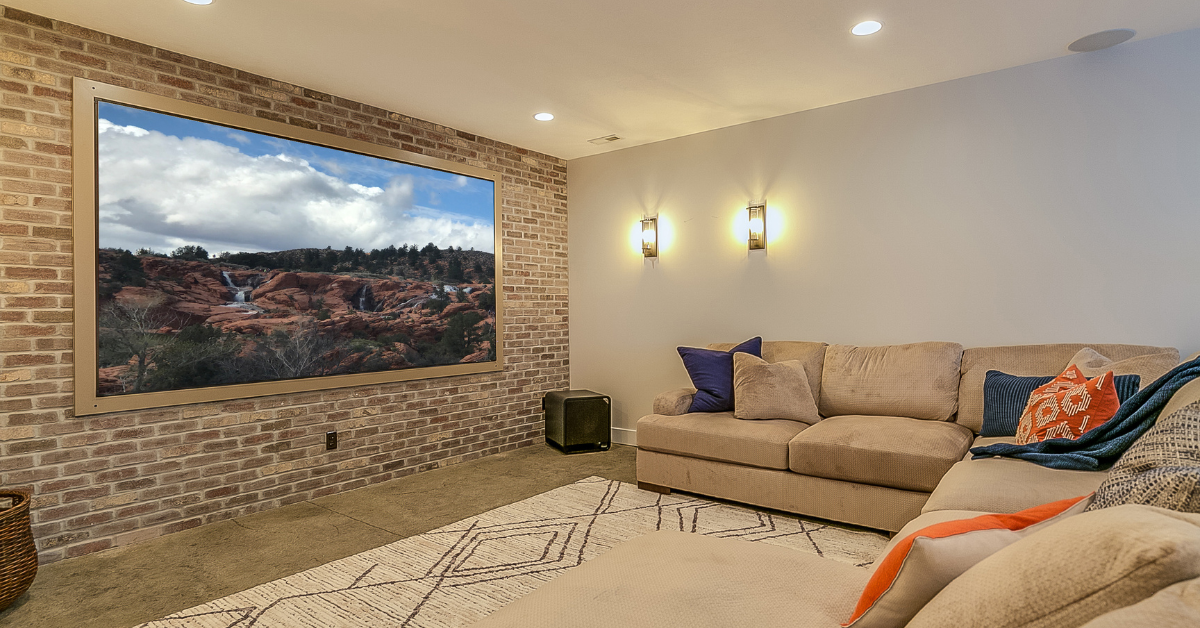Finishing basement walls is more than just a step in remodeling; it’s a transformative process that turns a raw, underutilized space into an important part of your home. Whether it’s creating a cozy family room, a home office, or a workout area, the walls of your basement form the foundation of this transformation.
Many homeowners dive into finishing their basement walls with a mixture of excitement and uncertainty. It’s a project that promises not only to expand your living space but also to increase your home’s value. However, the path to a beautifully finished basement is fraught with potential pitfalls. Moisture issues, material choices, and insulation are just the tip of the iceberg. Making informed decisions at each step ensures that your basement becomes a comfortable, inviting space rather than a source of ongoing headaches.
But where do you start? And how do you avoid the common mistakes that can derail your project? This blog will guide you through the dos and don’ts of finishing basement walls, ensuring your project lays the foundation for years of enjoyment.
Understanding Your Basement’s Needs
Assessing the Environment
Before you start finishing your basement walls, it’s crucial to understand the unique environment of your basement. Basements are prone to moisture, and without proper management, this moisture can cause mold and mildew, leading to health issues and damage to your finishes. Start with a thorough assessment of moisture levels and look for any signs of water ingress.
Planning for Comfort and Safety
Consider what you want your basement to become. Is it a living space, a workshop, or perhaps a home gym? Each purpose has different requirements for insulation, soundproofing, and ventilation. Planning with these end goals in mind ensures that your finished basement is not only beautiful but also comfortable and safe for everyone.
The Dos of Finishing Basement Walls
Choose the Right Insulation
Insulation is key in a basement. It helps control temperature, reduces noise, and prevents moisture from becoming a problem. Choosing insulation materials that are specifically designed for basements, such as rigid foam boards or spray foam, which can block moisture and keep your basement warm and dry.
Implement Moisture Control Measures
Before any finishing touches are made, addressing moisture control is a must. Use vapor barriers and consider integrating a dehumidifier system into your HVAC to keep humidity levels in check. Ensuring your basement stays dry will protect your investment and keep the space comfortable.
Select Appropriate Materials
Not all materials are suited for the basement environment. Choose materials that are moisture-resistant and designed for lower-level use. For example, opt for mold-resistant drywall and avoid organic materials that can harbor mold or deteriorate in damp conditions.
Consult with Professionals
Even if you’re a seasoned DIY enthusiast, consulting with Kitchen Design Studio can provide insights you might overlook. They can offer advice on local building codes, effective moisture management, and material choices. This step can save you time, money, and a lot of headaches in the long run.
The Don’ts of Finishing Basement Walls
Avoid Skipping Moisture Tests
Never begin your renovation without first checking for moisture. Ignoring this step can lead to mold and structural damage over time. Simple tests, like the plastic sheet test, can reveal hidden moisture issues that need to be addressed before moving forward.
Don’t Use Improper Materials
It might be tempting to cut costs by using cheaper materials, but in a basement environment, this can lead to problems. Materials not suited for high-moisture areas will deteriorate quickly. Avoid using regular drywall or untreated wood, which can absorb moisture and foster mold growth.
Neglecting Code Requirements
Basements have specific building code requirements, especially concerning egress windows and ceiling heights. Skipping these requirements not only poses safety risks but could also affect your home’s resale value. Always ensure your basement renovation meets local building codes to avoid costly corrections later.
DIY Without Adequate Knowledge
Taking on a basement finishing project without the necessary skills can lead to mistakes that are expensive to fix. If you’re not confident in your abilities to handle moisture control, insulation, and other critical aspects, it’s better to hire professionals. This ensures the job is done right the first time.
Finishing Touches: Adding Value to Your Basement
Lighting and Ambiance
Good lighting can transform a basement from a dark storage area to a vibrant living space. Consider a mix of natural light, if possible, and artificial lighting to create a warm and inviting atmosphere. Recessed lighting, wall sconces, and LED strips are great options that don’t take up much space.
Functional Design
Think about how you can make the basement serve your needs best. Built-in storage, multipurpose furniture, and flexible layouts can maximize the usability of your space. Whether it’s a home theater, guest room, or play area, designing with function in mind will add significant value to your basement.
Personal Touches
Finally, make the space your own with personal touches that reflect your style. Wall art, area rugs, and comfortable furnishings can make your basement feel like a true extension of your home. Choosing durable, moisture-resistant decor will ensure your basement remains beautiful and functional for years to come.
Conclusion
Finishing your basement walls is a big step towards turning an unused space into a vital part of your home. It’s about more than just putting up walls; it’s about creating a space that fits your life. Remember, the key to a successful basement renovation lies in careful planning, choosing the right materials, and knowing when to seek professional help. By following the dos and don’ts we’ve outlined, you’re on your way to adding valuable, enjoyable space to your home.
Whether you’re looking for more guidance, need professional assessment, or are ready to start your project, we’re here to help. Contact us today to learn more about our services and how we can make your basement renovation smooth and successful. Let’s bring your vision to life together.





